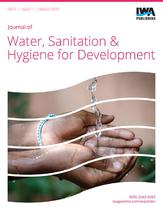| dc.contributor.author | Makaudze, Ephias M. | |
| dc.date.accessioned | 2021-09-16T11:57:43Z | |
| dc.date.available | 2021-09-16T11:57:43Z | |
| dc.date.issued | 2016 | |
| dc.identifier.citation | Makaudze, E. M. (2016). Measuring willingness-to-pay for water and sanitation by people living with HIV and AIDs in South Africa. Journal of Water, Sanitation and Hygiene for Development,6 (1),161–169 | en_US |
| dc.identifier.govdoc | https://doi.org/10.2166/washdev.2016.102 | |
| dc.identifier.issn | 2043-9083 | |
| dc.identifier.uri | http://hdl.handle.net/10566/6697 | |
| dc.description.abstract | The ill-provision of water and sanitation services poses the greatest risk to people living with HIV and AIDS in South Africa – a majority of whom reside in slum settlements. People living with HIV and AIDS (PLWHA) die after succumbing to opportunistic infections, especially water-borne diseases (e.g., diarrhoea, cholera). This study was based on 485 individuals with HIV and AIDs drawn from three types of settlements (rural, peri-urban and urban slums) and sampled from three selected provincial districts of Khayelitsha (Western Cape), Ukhahlamba (Eastern Cape) and Groblersdal (Limpopo). The results show PLWHA having higher willingness-to-pay (WTP) for sanitation at ZAR448.40/month compared to water (ZAR428.60). Those living in urban slum settlements show the highest WTP for sanitation (ZAR552.70), followed by the ones in rural areas (ZAR500.24). | en_US |
| dc.language.iso | en | en_US |
| dc.publisher | IWA Publishing | en_US |
| dc.subject | Human immune-deficiency virus | en_US |
| dc.subject | Acquired immune-deficiency syndrome | en_US |
| dc.subject | Slum settlements | en_US |
| dc.subject | Water and sanitation | en_US |
| dc.subject | South Africa | en_US |
| dc.title | Measuring willingness-to-pay for water and sanitation by people living with HIV and AIDs in South Africa | en_US |
| dc.type | Article | en_US |

